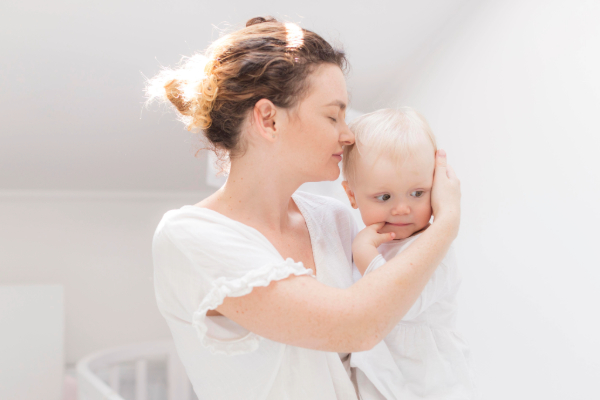24 September 2025
Postpartum Hair Loss: Why It Happens, When It Starts, and How to Support Your Hair’s Recovery
Welcoming a new baby brings joy, change, and for many new mums, a surprising amount of hair loss.
If you’ve noticed more strands in your brush or clumps in the shower a few months after giving birth, you’re not alone. Postpartum hair loss is incredibly common, but that doesn’t make it any less alarming when it happens to you.
In this blog, we’ll explore why it happens, when it starts, and what you can do to gently support your hair through this temporary phase.
1. What Causes Postpartum Hair Loss?
During pregnancy, your body increases production of oestrogen, a hormone that helps keep hair in its growing phase. This often results in thicker, fuller hair for many women during those nine months.
However, after birth, oestrogen levels drop sharply. This sudden hormonal shift pushes many hairs into the resting (telogen) phase all at once, causing noticeable shedding a few weeks or months later. This process is known as telogen effluvium, and it’s completely normal.
2. When Does Postpartum Hair Loss Start?
Postpartum shedding typically begins between 6 and 12 weeks after delivery and can last for 3–6 months, sometimes longer. Most women notice the most intense hair loss around the 4–5 month mark, particularly at the temples or along the hairline.
It’s worth noting that breastfeeding can sometimes prolong this timeline, as hormonal fluctuations continue throughout.
3. What Does It Look Like?
Increased daily shedding, especially during brushing or washing
Thinning around the temples or a widening parting
Clumps of hair appearing on the pillow, bathroom floor or shower drain
While it might feel like you're losing all your hair, what you’re seeing is usually a rebalancing of the growth cycle - and not permanent damage!
4. Is Anything Else Contributing?
Yes. While hormonal changes are the main trigger, other factors can worsen or prolong hair loss:
Low iron levels, particularly common post-birth
Poor nutrition or skipped meals during the busy early weeks
Thyroid imbalances (such as postpartum thyroiditis)
If hair loss is severe, lasts more than 12 months, or comes with other symptoms (like fatigue or changes in mood), it’s worth speaking to your GP or a trichologist for a closer look.
5. How To Support Hair Loss Recovery: Hair Loss Treatments and Products
You can’t stop postpartum hair loss entirely - but you can support healthier regrowth:
Eat well: Focus on iron-rich, protein-packed foods. Leafy greens, lentils, eggs, nuts, and oily fish can make a difference. If you’re breastfeeding, stick with supplements that are safe and tailored for postpartum recovery.
Be gentle with your hair: Avoid heat styling, tight hairstyles, or harsh brushing. Use a wide-tooth comb and pat hair dry instead of rubbing.
Nourish your scalp: A healthy scalp creates a better foundation for new growth. Choose gentle, sulphate-free shampoos and consider a scalp massage with your fingertips to boost blood flow. Mediceutical products, specifically the Mediceuticals Folligen Kit is great and specifically designed to combat hair thinning and promote scalp health.
Rest and recharge when possible: Easier said than done—but even brief moments of rest support overall recovery, including your hair.
Stay patient: This phase can feel frustrating, but it will pass. Regrowth often begins within a few months of shedding, and baby hairs are often a reassuring early sign.
Postpartum hair loss is a completely natural part of the postnatal transition. It’s your body’s way of readjusting to pre-pregnancy hormone levels. While the shedding phase can feel distressing, it’s usually temporary—and with time, rest, and good nutrition, most women see their hair return to normal.
Every strand tells a story, and this chapter, too, will grow out.
If you’re looking for more personalised advice or professional hair and scalp treatments, reach out to us at Hove Hair Clinic on 01273 711140. We’re here to help you achieve your goals with expert guidance and bespoke care.
